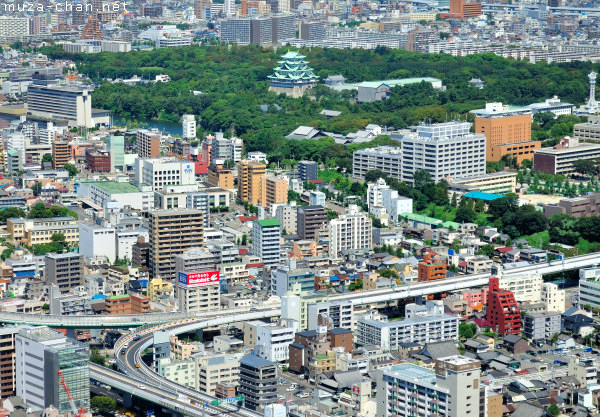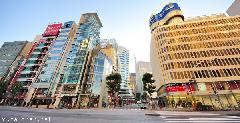Built at the orders of shogun Tokugawa Ieyasu, the Nagoya Castle was located in a strategic place, to stop the attacks coming from Osaka. The castle was finished in 1612 while the adjacent Hommaru Palace was completed three years later, in 1615. In 1930, the Nagoya Castle’s donjon (tenshu) and the palace were the first Japanese castles designated as National Treasures.
Unfortunately, the main donjon, the Hommaru Palace and most of the buildings were destroyed during the May 1945 bombings. What remained, 3 towers, 3 gates and some of the pictures from the interior sliding doors and walls were saved and declared Important Cultural Assets.
The Donjon (in the center of the green area in this photo) was completely rebuilt in 1959 and the reconstruction works are still in progress: the rebuilding of the Hommaru Palace started in 2009 and will be finished in 2018. For now, the palace is visible only as a rectangular building covered by scaffolding (on the right of the donjon in the photo).
Travel tip: If you visit the Nagoya Castle, you can take a look at the reconstruction works, with traditional woodworking techniques, from an observation corridor located 9 meters above the ground.
EXIF Info:
|
Yesterday’s Japan Photo:Yurakucho, a wide-angle street view and a bit of history |



